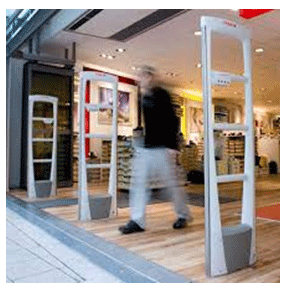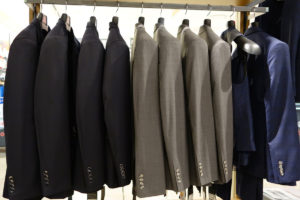 It is true the retail industry losses are staggering. Losses due to shoplifting and employee theft are a problem that seems to have no solution. Small mom and pop stores close their stores for good because of the losses they encounter and cannot recover from. Big national retail stores have the capability to withstand losses from shoplifting and employee theft that other smaller stores cannot.
It is true the retail industry losses are staggering. Losses due to shoplifting and employee theft are a problem that seems to have no solution. Small mom and pop stores close their stores for good because of the losses they encounter and cannot recover from. Big national retail stores have the capability to withstand losses from shoplifting and employee theft that other smaller stores cannot.
New technologies have been a help for many of these giants in the prevention of shoplifting and employee theft. The new technology has helped these retail stores prevent the crime before it happens or when they are happening. Two of these technologies are: Video analytics along with video cameras and Face recognition software. They have played an important role in shoplifting prevention in the retail industry.
For more about preventing shoplifting and employee theft
There’s an old saying that “you have to spend money to make money,” but it’s also true that one of the best ways to make money is to avoid spending money in the wrong places. If your business is spending too much money on unnecessary business expenses – or worse, if your business is losing money due to theft by customers or employee fraud – you are letting good money go out the door. And this makes it harder for your business to be profitable because you have to work that much harder.
Here are a 20 ways to make more money and boost your profit margins by minimizing loss in your business:
- Reduce Administrative Errors: Many businesses make seemingly simple mistakes in their pricing, paperwork or bookkeeping that lead to big losses over time.
- Prevent Employee Theft: Employees stealing from their own companies is a major cause of “shrinkage” or business profit loss. According to RetailNext, employee theft makes up almost half of the $42 billion in retail shrinkage each year.
How to tackle employee theft with real-time inventory
Minna Nurmisalo, project & marketing manager at MariElla Labels, takes a look at how real-time inventory can help deter employee theft.
No retail business wants to believe that they might be subject to theft from their own employees. Unfortunately, it is a very real problem. It might be stealing items on their person, or exploiting employee discount privileges to significantly reduce the price – either way, employee theft can account for as much as 28% of unexplained inventory loss globally, according to the recent Global Theft Barometer Report.
In order to prevent it, it is first important for employers to be aware why employees might feel the temptation to steal – from financial pressures in their personal lives, to general disgruntlement with their employers.
But irrespective of the emotional reason that causes employees to consider stealing, it all boils down to something very simple: they think they can get away with it.
Beat The Shrink: How Inventory Management Can Help Reduce Shrinkage
Retailers ate losses of more than $45 billion thanks to shrinkage in 2015, a $1 billion jump from the 2014 total. If this trend continues, the 2016 figure could exceed $47 billion!
How can so much inventory just walk out the door? According to the National Retail Federation, there are five main ways for your supply to disappear.
Sometimes it doesn’t even make it to the store. Roughly seven percent of shrink comes from the vendors in the form of overcharges or undersupply. Small businesses can be especially vulnerable to this if they operate on more informal bases with their supply companies. Check your contracts and make sure expectations are clear.
Human errors count for another 16 percent. Maybe someone ordered too much product to move in a realistic timeframe. A stocker accidentally slapped the wrong price on an item and led to an impromptu sales event. It could be something as simple as poorly-inventoried stockrooms that harried employees tally by physical count and tally marks.
Other times, though, goods may get a helping hand out the door.
Shoplifting counts for 38 percent of loss. People may steal for personal use. They might need to make fast money from a resale. It could be nothing more than they steal because they can, but the end result remains the same: Lost revenue and unbalanced books.
 Okay we know that shoplifters are one of the lowest forms of life. Stealing from people is not noble or right in any situation. I believe that shoplifters are a strong competitor for the oldest profession in the world. After all, I bet a cave man was able to steal a rock from another before prostitution even existed and politicians didn’t even exist yet. Even though some in Congress seem to have been around much too long.
Okay we know that shoplifters are one of the lowest forms of life. Stealing from people is not noble or right in any situation. I believe that shoplifters are a strong competitor for the oldest profession in the world. After all, I bet a cave man was able to steal a rock from another before prostitution even existed and politicians didn’t even exist yet. Even though some in Congress seem to have been around much too long.
 Have you ever noticed that when a convenience store robbery takes place the crook never demands all of the credit card slips? I have never heard of a bank robber pulling out a gun and yelling for the teller to give them all of the checks in the drawer. What is it the bad guys are always trying to get their hands on…CASH! While Loss Prevention departments do work on credit card and fraudulent check cases our bigger concern is cash theft and fraud. It has been my experience that in many incidents involving a stolen credit card or check, I have been able to work with bank investigators and police detectives to identify and in some cases resolve those crimes. In those situations there is usually a victim as well as a perpetrator of the crime. When it comes to cash loss cases it becomes another matter altogether, the victim is the store. While we may have video of the crime there may not be any other means of tying in additional information. Another issue with cash losses is that the stolen money cannot be tracked further. Stolen credit cards tend to leave a trail of locations where they are used which can lead to greater opportunities to pick up on additional evidence. The same can be true with fraudulent check writing cases. With a cash loss case, once it’s gone you don’t see it again, money is not traced.
Have you ever noticed that when a convenience store robbery takes place the crook never demands all of the credit card slips? I have never heard of a bank robber pulling out a gun and yelling for the teller to give them all of the checks in the drawer. What is it the bad guys are always trying to get their hands on…CASH! While Loss Prevention departments do work on credit card and fraudulent check cases our bigger concern is cash theft and fraud. It has been my experience that in many incidents involving a stolen credit card or check, I have been able to work with bank investigators and police detectives to identify and in some cases resolve those crimes. In those situations there is usually a victim as well as a perpetrator of the crime. When it comes to cash loss cases it becomes another matter altogether, the victim is the store. While we may have video of the crime there may not be any other means of tying in additional information. Another issue with cash losses is that the stolen money cannot be tracked further. Stolen credit cards tend to leave a trail of locations where they are used which can lead to greater opportunities to pick up on additional evidence. The same can be true with fraudulent check writing cases. With a cash loss case, once it’s gone you don’t see it again, money is not traced.

 Would you knowingly buy a car with a defective engine? Of course not! So why would you hire a “defective employee”?
Would you knowingly buy a car with a defective engine? Of course not! So why would you hire a “defective employee”? When do closed circuit television malfunctions occur? I’m sure you can guess, it is always at the point when you need it most. I can’t recall the number of instances when I had a cash shortage I needed to look for and when I attempted to pull video through the DVR the video was already dropped or the camera wasn’t functioning. I remember having to look for an image of a suspect in a shoplifting incident and the picture was too grainy to be of any use due to a dirty camera lens or dome. One slightly embarrassing situation that stands out in my mind involved robberies that were taking place behind our store. I had developed a great working relationship with our local police department and they knew the quality of our camera system. Investigators came to me seeking assistance with outdoor camera footage to try to identify the criminals conducting the robberies. I pulled up video of the date and time in question and much to my chagrin the camera had a great shot of the ground directly underneath it. A power surge had impacted the programming of the pan/tilt/zoom (PTZ) camera and placed it in a default position. I had not noticed the problem in a timely fashion and could not recall how long it was before I did catch the issue. The good news was I was able to re-program the camera and eventually we did provide footage of an incident a little later that led to an arrest.
When do closed circuit television malfunctions occur? I’m sure you can guess, it is always at the point when you need it most. I can’t recall the number of instances when I had a cash shortage I needed to look for and when I attempted to pull video through the DVR the video was already dropped or the camera wasn’t functioning. I remember having to look for an image of a suspect in a shoplifting incident and the picture was too grainy to be of any use due to a dirty camera lens or dome. One slightly embarrassing situation that stands out in my mind involved robberies that were taking place behind our store. I had developed a great working relationship with our local police department and they knew the quality of our camera system. Investigators came to me seeking assistance with outdoor camera footage to try to identify the criminals conducting the robberies. I pulled up video of the date and time in question and much to my chagrin the camera had a great shot of the ground directly underneath it. A power surge had impacted the programming of the pan/tilt/zoom (PTZ) camera and placed it in a default position. I had not noticed the problem in a timely fashion and could not recall how long it was before I did catch the issue. The good news was I was able to re-program the camera and eventually we did provide footage of an incident a little later that led to an arrest. When I was a Loss Prevention Manager we would catch a shoplifter or a dishonest employee and recover merchandise. Depending on the type of case we would sometimes hold the evidence for a few days until the court hearing other times it could be much longer. If a shoplifter refused to plead guilty or requested a jury trial cases could be held up for months if not longer. I had several cases that went on for more than a year. Felony shoplifting cases and juvenile cases in our jurisdiction often meant lengthy wait periods depending on caseloads in the court. I also recall at least one shoplifting case in which the lawyer for the defendant requested extensions three separate times hoping that I would not appear for the hearing and the case would be dropped. No dice, I showed up for each hearing and finally the lawyer entered a guilty plea. The problem with the lengthy cases was that we would have to hold the evidence until the cases were settled. In some situations the police department held the recovered merchandise, such as when they stopped the suspect after the suspect fled the store. When merchandise has to be held for long periods it is possible for it to sit in evidence and be forgotten about. For stores that are too small to have security or Loss Prevention Departments management may be storing that evidence and no one is thinking about following up on cases with their police department or court.
When I was a Loss Prevention Manager we would catch a shoplifter or a dishonest employee and recover merchandise. Depending on the type of case we would sometimes hold the evidence for a few days until the court hearing other times it could be much longer. If a shoplifter refused to plead guilty or requested a jury trial cases could be held up for months if not longer. I had several cases that went on for more than a year. Felony shoplifting cases and juvenile cases in our jurisdiction often meant lengthy wait periods depending on caseloads in the court. I also recall at least one shoplifting case in which the lawyer for the defendant requested extensions three separate times hoping that I would not appear for the hearing and the case would be dropped. No dice, I showed up for each hearing and finally the lawyer entered a guilty plea. The problem with the lengthy cases was that we would have to hold the evidence until the cases were settled. In some situations the police department held the recovered merchandise, such as when they stopped the suspect after the suspect fled the store. When merchandise has to be held for long periods it is possible for it to sit in evidence and be forgotten about. For stores that are too small to have security or Loss Prevention Departments management may be storing that evidence and no one is thinking about following up on cases with their police department or court.